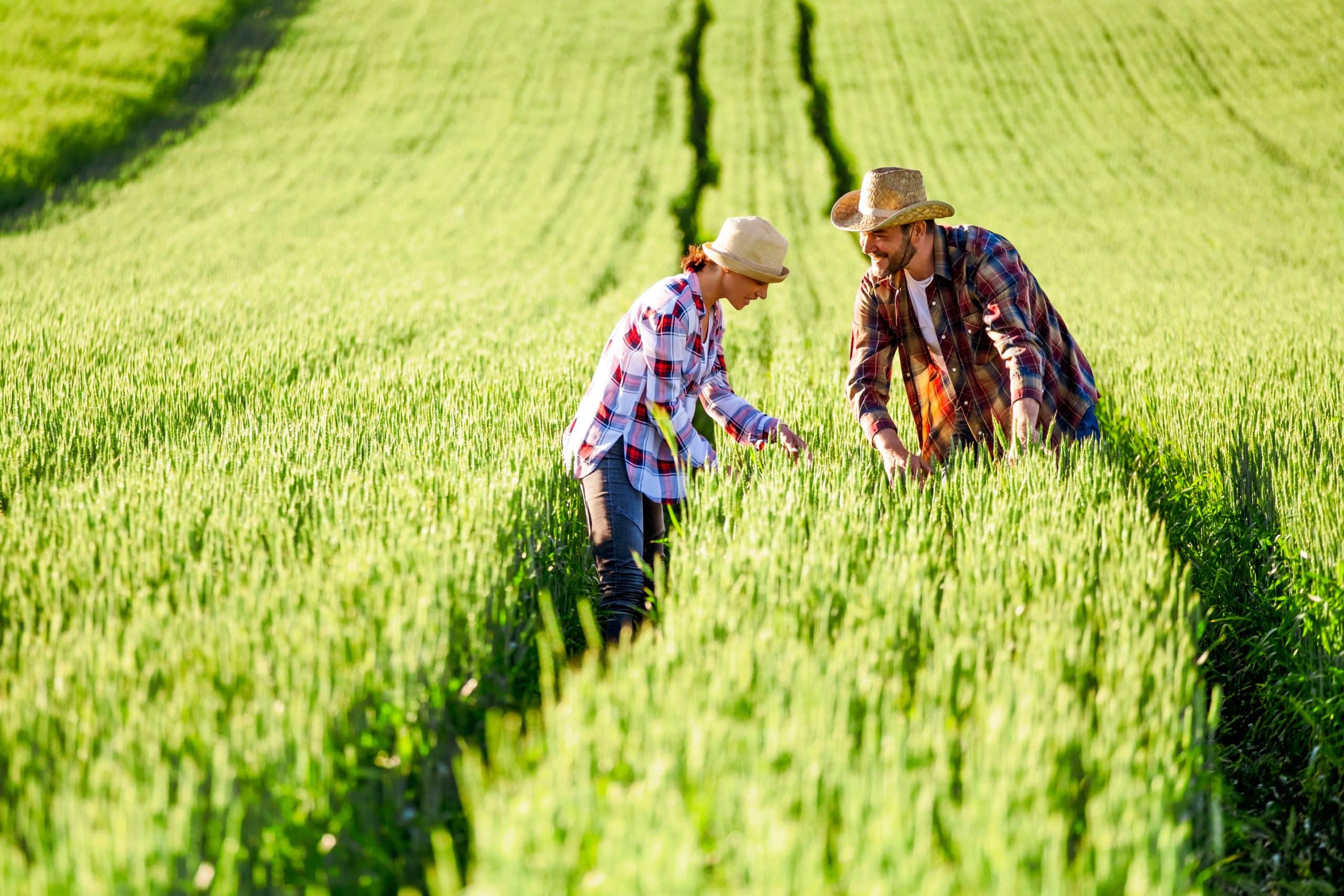Can AI Predict the Optimal Planting Patterns for Maximizing Crop Yield in Variable Climates?

Every year, farmers around the world face the Herculean task of determining the best ways to manage their crops in variable weather conditions, with the aim of maximizing yield. Recent advancements in Machine Learning (ML), a subset of Artificial Intelligence (AI), offer significant potential for agricultural optimization and yield prediction. Data-driven models can provide more precise and reliable predictions than traditional agricultural methods, leading to improved crop management and potentially increased yield.
This article delves into the potential of machine learning models to predict optimal planting patterns and how they can be utilized in variable climates to maximize crop yield. We will focus on the potential role of AI in analyzing data from Google Scholar, Crossref, and other reputable sources, along with the impact of soil and weather conditions on agricultural yield. We will also examine the effectiveness of these models and their potential implications for global agriculture.
A voir aussi : How Is Virtual Reality Being Applied to Enhance Training in Hazardous Industry Environments?
Machine Learning and Agriculture
Machine learning is a powerful tool that has the potential to revolutionize the way we approach agriculture. By training computers to learn from and make decisions based on data, machine learning can help farmers make more informed choices about planting patterns, crop management, and yield predictions.
Data is a critical component of machine learning models. Google Scholar and Crossref are two significant resources for accessing a treasure trove of agricultural data. By analyzing this vast amount of information, machine learning algorithms can identify patterns and trends that would be impossible to detect through manual analysis.
Sujet a lire : How Are Artificial Neural Networks Enhancing Real-Time Intrusion Detection Systems?
One of the most promising applications of machine learning in agriculture is in predicting crop yields. Accurate yield predictions are crucial for both farmers and policymakers, as they can impact everything from food security to economic planning. By analyzing data on soil conditions, weather patterns, and past crop performance, machine learning models can provide accurate yield predictions well in advance of the harvest.
Understanding Variable Climates with Data Analysis
Variable climates pose a significant challenge for farmers. Unexpected weather changes can severely impact crop yields, leading to food shortages and economic loss. However, with the aid of machine learning, it is possible to analyze weather data and predict future conditions with a high degree of accuracy.
Data analysis tools like machine learning models can process massive amounts of weather data from different sources, including satellite imagery and on-ground weather stations. By analyzing past weather patterns, these models can predict future conditions, allowing farmers to adjust their planting patterns and crop management strategies accordingly.
For example, if the model predicts a dry season, farmers can opt for drought-resistant crops or adjust their irrigation strategies. On the other hand, if a wet season is predicted, farmers can prepare by choosing crops that can withstand excess moisture and implementing appropriate drainage systems.
The Role of Soil in Crop Yield Predictions
Soil conditions play a crucial role in determining crop yields. Factors like soil type, nutrient content, and moisture levels can significantly impact the growth and productivity of crops. Machine learning models can analyze data on these factors to provide accurate yield predictions.
Scientists have been using DOI (Digital Object Identifier) data and databases like Google Scholar and Crossref to gather information on various soil conditions and their impact on crop yields. By incorporating this data into machine learning models, we can make more accurate predictions about crop yields based on soil conditions.
Farmers can use these predictions to make decisions about which crops to plant and how to manage their soil. For example, if the model predicts low yields due to poor soil conditions, farmers can take steps to improve the soil, such as adding fertilizers or adjusting the pH level.
Impact of AI on Crop Management
AI and machine learning models can significantly impact crop management by providing insights that were previously impossible to gain. For instance, by analyzing patterns in yield data, these models can identify which crops perform best in certain soil and weather conditions.
Farmers can use this information to optimize their planting patterns, choosing crops that are likely to thrive in their particular conditions. Furthermore, these predictions can help farmers manage their resources more efficiently, reducing waste and increasing sustainability.
Beyond individual farms, these models could also impact agricultural policy and planning on a larger scale. Policymakers can use yield predictions to plan for food security and economic stability, making decisions about import and export based on predicted crop performance.
While the potential benefits of AI and machine learning in agriculture are significant, it’s important to remember that these are tools, not a magic bullet. Developing and implementing these models are challenging and require a deep understanding of both technology and agriculture.
Deep Learning: A New Frontier in Agricultural Predictions
Deep learning, a subset of machine learning, has begun to gain traction in the field of agriculture for its incredible ability to digest and interpret complex datasets. Utilizing artificial neural networks, deep learning algorithms are capable of discovering hidden patterns within the data that aren’t immediately obvious.
Large databases like Google Scholar, Crossref, and PubMed Crossref are rich sources of data for deep learning algorithms. These systems sift through countless articles and research papers, extracting key points relating to soil conditions, weather patterns, and crop yields. This data is then used to create models capable of predicting a range of outcomes in agriculture.
In the context of variable climates, these models hold immense potential. Deep learning can parse through years of weather data, identifying patterns and trends that may forecast future climate scenarios. This, in turn, can be utilized to predict optimal planting patterns, ensuring maximum yield regardless of weather conditions.
Additionally, deep learning models can also analyze soil conditions, including factors like nutrient content and moisture levels. Such data-based soil analyses can significantly improve yield prediction accuracy, making farming more efficient and sustainable.
However, the application of deep learning in agriculture is not without its challenges. These models require a significant amount of data to train effectively. Furthermore, the interpretation of these models’ predictions requires a sound understanding of both agriculture and technology, necessitating a degree of expertise in both fields.
The Future of Agriculture: AI and Predictive Analysis
In the face of climate change and increasing unpredictability of weather patterns, the role of AI in agriculture becomes even more critical. Machine learning algorithms, deep learning models, and artificial neural networks have the potential to transform farming, making it more efficient, sustainable, and adaptable.
In the future, we could see farmers relying heavily on AI for yield prediction. These predictions could be based on a range of factors, including past crop performance, weather patterns, and soil conditions, all analyzed using data from databases like Google Scholar and Crossref.
Predictive analysis could also be beneficial at the macro level, influencing policy decisions relating to food security and economic planning. For instance, the PMC free article database can provide policymakers with access to extensive research on agricultural trends, helping to inform decisions on import and export policies.
However, it’s essential to remember that while AI offers enormous potential, it’s not a standalone solution. Both the development and implementation of these models require a deep understanding of agriculture and technology. Therefore, continuous research, innovation, and collaboration between technologists and agricultural experts are crucial for leveraging AI to its full potential in farming.
In conclusion, AI, through machine learning and deep learning models, is poised to revolutionize agriculture, providing farmers and policymakers with valuable insights and predictions to optimize crop yield and resource management. By harnessing the power of data from sources like Google Scholar, Crossref, and PubMed Crossref, these AI models can help tackle the challenges of variable climates, making agriculture more resilient and sustainable for the future.
